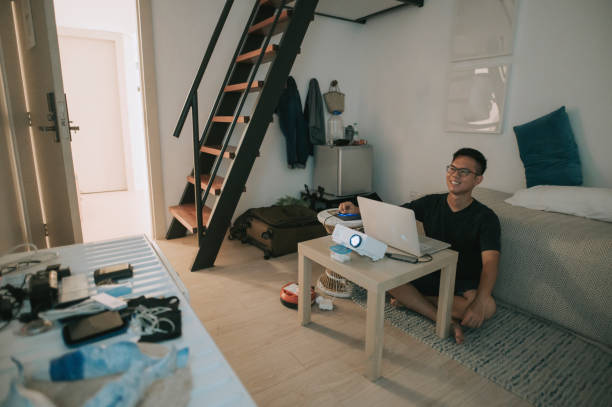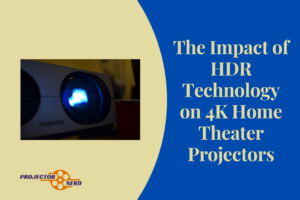A home projector can be connected to a computer or a laptop by following some steps. The users will also need various equipment to establish the connection. They can use their best projector for home as a mirrored or secondary display for their laptops. This article will clearly explain to them how to connect their laptops to projectors for projecting the desktop or using it as a secondary monitor.
Contents
Basic steps
•The users will need to plug 1 cable of HDMI into their laptops & the projectors (if necessary, they can use an adapter). Then they will have to turn the projector on &open its lens.
• Next, they will have to open the settings of display on their laptops &adjust as required.
• Lastly, they will have to use a mirror display for projecting their desktops or they can use an extended display so that the projectors can act as secondary monitors.
Requirement of adaptersfor connecting laptops to projectors
You may need or not need adapters depending on the ports that are available on the laptop of yours. Most projectors include 1 input port of HDMI. So probably you will not need adapters if your laptop includes a full-sized port of HDMI. The same will be true if the projector includes VGA input & your computer has a VGA port. You will need an adapter in most of the other cases.
How to connect laptops to projectors?

For connecting your laptops to your projectors, you will need a cable & any necessary adapter along with the projector and the laptop. Once you have got all these items, here is a guide to let you know how to hook up each thing.
- First, turn the laptop on.
- Plug a cable HDMI, an adapter or a cable VGA into your laptop. (If you are using an adapter, plug a cable of HDMI into that too.)
- Plug the other part of the cableinto that projector.
- Now turn the projector on.
- Remove the cap of the projector & open the lens of it. (this step may not be required for your projector. You can skip this step if it immediately projects an image on the wall as it is turned on.)
- Now the projector is ready to use. Though, additional configuration will probably be required.
The image will probably be blurry if you have not set your projector up yet. Ensure that the image looks clear before you move on.
How to connect projectors to aWindows computer?
Most Windows devices include an HDMI-out port. You can connect it directly to your projector using a cable of HDMI. Next, check the projector’s manual to set up HDMI as the input source. Then follow the below steps on your device.
- First, go to the Start Menu & click Settings.
- Next, navigate to System. Then go to Display & then to Advanced Settings.
- Now your projector should be visible as a 2nd screen. If not, you will have to click Detect.
- Next, select the option of Duplicate These Displays for making your projector mirror the computer monitor.
- Lastly, click Apply.
How to connect projectors to a Mac computer?
If you use a computer with Mac OS, you will probably have to purchase a converter as the cable standards of Apple have changed too much in recent years. Modern MacBooks frequently use USB type-C dongles that are multifunctional. Many also have the feature HDMI-out. Once you get matching converters for the output type of your computer, connect that to your projector using a cable of HDMI. Then:
• Click on the icon of Apple at the top left & select System Preferences.
• Next, select Displays & then Arrangement.
• Then, check the box of Mirror Displays.
You will see your desktop Mirror on the screen of the projector. Try restarting your projector if you face any issues. The cables of HDMI can fail if they are damaged. So, you need to make sure to get the ones that are of good quality &store them safely.
How to connect projectors to computers using DVI?
The steps to use DVI are similar to the ones found in the section of HDMI. Although, you may find you will need converters to make it work. Luckily, a wide variety of DVI converters are there for VGA, HDMI and USB Type-C. If DVI is the only computer output you have got, you will find that those converters can work in reverse position. The compatibility between HDMI video and DVI makes it easier to work with.

I’m Steven Berry and I’m the proud owner of an electronics store. With years of experience in the industry, I’m passionate about providing top-quality projectors to customers who want to take their entertainment or business presentations to the next level. Browse my store and let me help you find the perfect projector for your needs.



